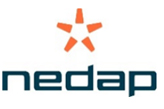
Whether you are considering (or reconsidering) installing sort gates or looking to improve efficiency with your current setup, here are two things to ponder:
- Protocols performed without technology tend to require a larger number of labor hours.
- If you perform a task with technology, and the data is accurate and data capture efficient, you can significantly reduce task time allotments.
Plus, sort gate technology adds value by helping cows exhibit natural behaviors with easy cow flow and gives animals more time at the feedbunk or lying in stalls by not retracing steps post-milking.
Hardware and design flow considerations
Sort gates read a cow’s electronic identification (ID) and direct cows depending on whether a specific preset parameter is met. Sorting action may be triggered by factors such as milk yield, reproductive protocols, health challenges, or another management reason.
For gate hardware to work well, bushings and gates should move freely. Make sure components are not loud and clanking, startling animals and creating an environment of fear. Typically, gates feature air-powered components to create quiet functionality.
The goal is to create easy, consistent cow flow through sort gates.
Consider:
- The sort area needs to be open and inviting.
- Sort pens should be appropriately sized so they do not overflow with cows and create backups in the sorting lane.
- Ensure a consistent and predictable flow of animals today, tomorrow, and the next day. The same speed and cow flow all day, every day offers the sort gate a much better chance to learn and adapt to cows and cut out the right animals at the right time.
Plan for these factors during facility design, whether changing gate placement in your current setup or considering automation when designing a new facility.
Software and ID function
Accurate data collection is essential for an optimized sort gate and critical to software performance and ID function. When segregating an animal from an exit lane, you must know which cow is which and when to open the gate accordingly. Without accurate ID, that goal is impossible.
Additionally, keep in mind read range affects ID capture. Reading ability is further influenced by the tag used to identify animals in the sort lane. Ask your technology partner if the read range is sufficient to identify the cows accurately and consistently. Also determine if electronic “noise” limits read range.
It is also essential to know which cows the system is identifying. Typically, it is not ideal for cows to be on the backside of the sort lane. Cows walking by the antenna that are not in the lane to be sorted could potentially get identified. This unintended consequence could slow sorting or cause animals to end up in incorrect pens.
Design your setup to shield the ID reading area – it only identifies the cows walking through the sort lane and does not inadvertently find cows in other areas.
Additional points
You may have tried a sort gate before, but it did not perform to expectations. Realize both software and hardware keep improving, so the experience today may be much smoother than before.
Ultimately, sort gates provide one more opportunity to move from group management to an individual animal management perspective. Instead of managing by exception, you are now managing the individual cow or individual challenge.
Visit nedap-livestockmanagment.com for more information about sort gates.
Nedap develops technology for life. Technology that helps people be more successful and happier in their professional lives. For Nedap Livestock Management this means helping professional dairy producers run a profitable, sustainable and enjoyable business. The solutions Nedap creates enable them to automate everyday tasks and make informed decisions based on individual animal identification and data. This way Nedap empowers livestock producers to respond to the growing global demand for animal protein in a way that is both profitable and aligned with rising standards for animal welfare, sustainability, transparency and the safety and quality of food.
Nedap employs more than 950 employees and operates on a global scale. The company was founded in 1929 and has been listed on Euronext Amsterdam since 1947. Its headquarters are located in Groenlo, the Netherlands.



